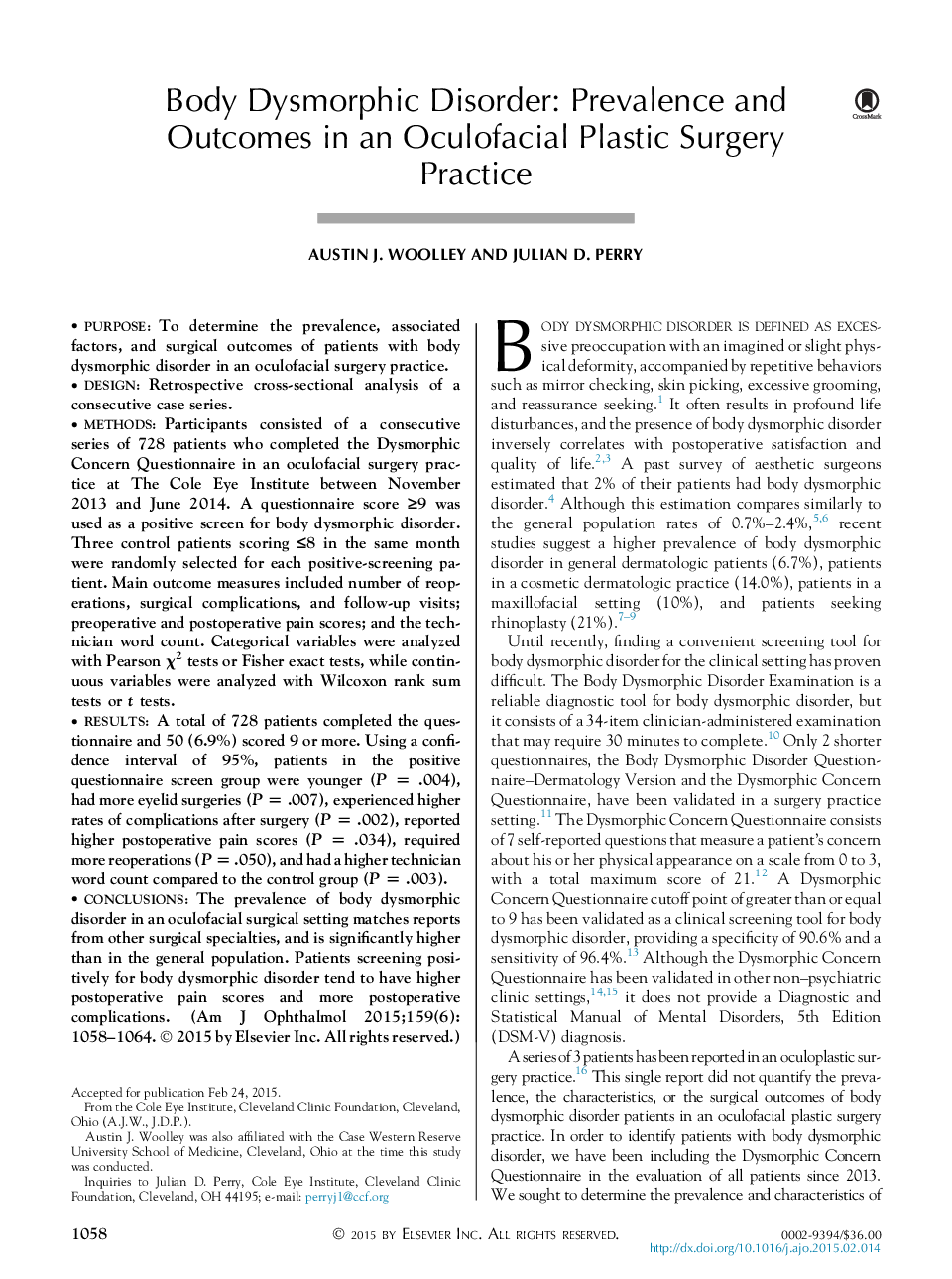| کد مقاله | کد نشریه | سال انتشار | مقاله انگلیسی | نسخه تمام متن |
|---|---|---|---|---|
| 6195705 | 1602123 | 2015 | 8 صفحه PDF | دانلود رایگان |
PurposeTo determine the prevalence, associated factors, and surgical outcomes of patients with body dysmorphic disorder in an oculofacial surgery practice.DesignRetrospective cross-sectional analysis of a consecutive case series.MethodsParticipants consisted of a consecutive series of 728 patients who completed the Dysmorphic Concern Questionnaire in an oculofacial surgery practice at The Cole Eye Institute between November 2013 and June 2014. A questionnaire score â¥9 was used as a positive screen for body dysmorphic disorder. Three control patients scoring â¤8 in the same month were randomly selected for each positive-screening patient. Main outcome measures included number of reoperations, surgical complications, and follow-up visits; preoperative and postoperative pain scores; and the technician word count. Categorical variables were analyzed with Pearson Ï2 tests or Fisher exact tests, while continuous variables were analyzed with Wilcoxon rank sum tests or t tests.ResultsA total of 728 patients completed the questionnaire and 50 (6.9%) scored 9 or more. Using a confidence interval of 95%, patients in the positive questionnaire screen group were younger (P = .004), had more eyelid surgeries (P = .007), experienced higher rates of complications after surgery (P = .002), reported higher postoperative pain scores (P = .034), required more reoperations (P = .050), and had a higher technician word count compared to the control group (P = .003).ConclusionsThe prevalence of body dysmorphic disorder in an oculofacial surgical setting matches reports from other surgical specialties, and is significantly higher than in the general population. Patients screening positively for body dysmorphic disorder tend to have higher postoperative pain scores and more postoperative complications.
Journal: American Journal of Ophthalmology - Volume 159, Issue 6, June 2015, Pages 1058-1064.e1
